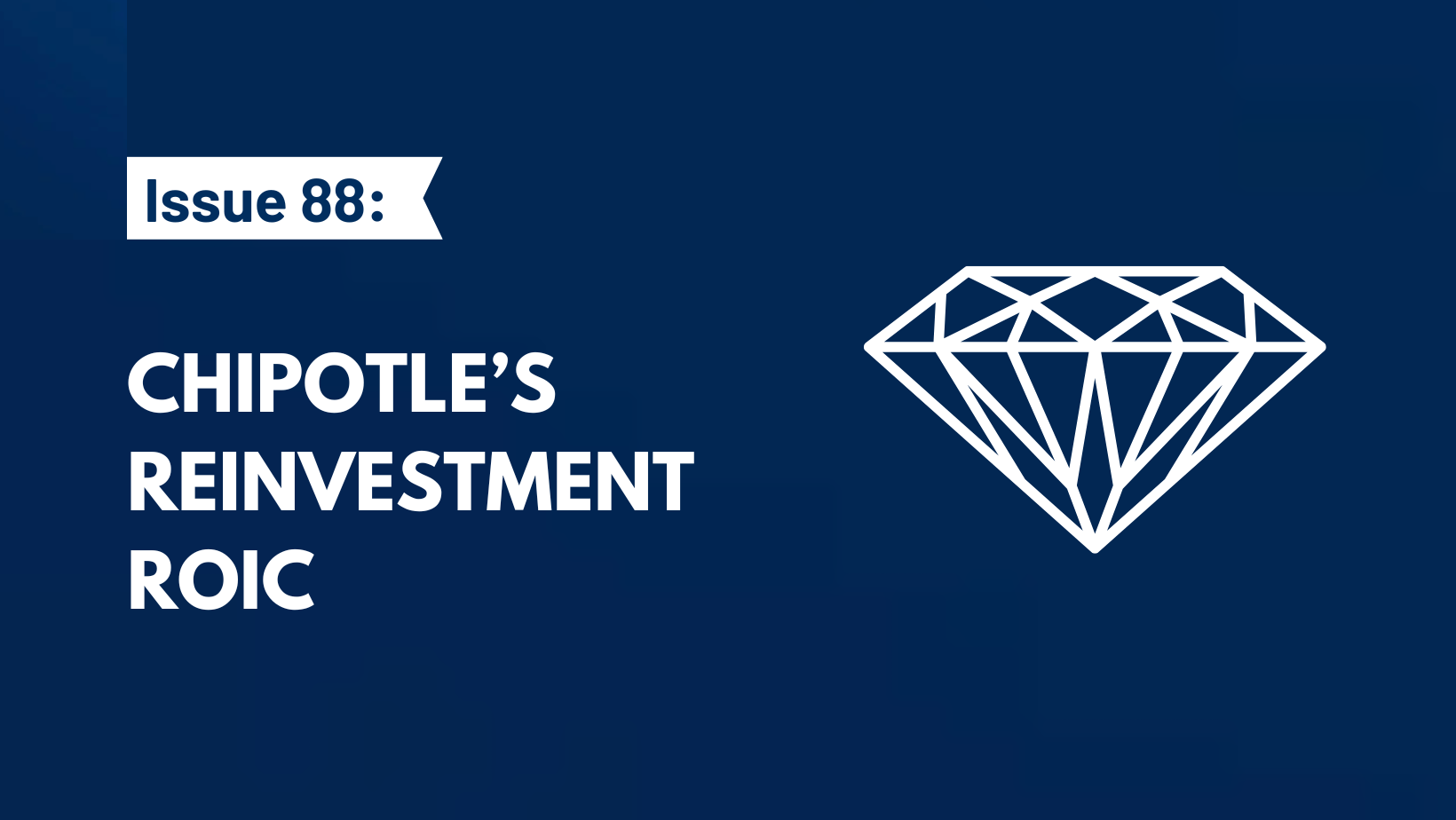NOTE: this was a past issue of my weekly newsletter, Timeless Gems. Join my free mailing list so you don’t miss out on future issues.
As year-end approaches, I do what any sane person does – review my stock portfolio performance. As I look at my portfolio and watchlist, I seem to like serial acquirers, a lot. Some of my best investment returns (so far) have come from acquisition-focused businesses like Constellation Software, Mainstreet Equity, and TerraVest Industries.
So, in this post, I wanted to pen down some of my thoughts and outline similarities I’ve noticed among high-quality serial acquirers.
What is a serial acquirer
Simply put, a serial acquirer is a business that grows by acquiring other businesses (or assets in the case of Mainstreet). Actually, it goes beyond that – they exist solely to buy businesses. This is different than just regular operating businesses making strategic acquisitions (though the lines can be blurred sometimes).
Also, different from an investment firm, serial acquirers are generally principals, not agents. This means they invest off their own balance sheet and don’t manage other people’s money.
In a previous post, I showcased some legendary compounders, and many of them are serial acquirers.
So what’s so special about serial acquirers?
Reinvestment runway
Good businesses generate a respectable amount of profits relative to the capital they employ for operations (return on invested capital or ROIC). But even good businesses run out of ideas within the business to reinvest those profits in (like R&D, sales, marketing, etc.)… and often relatively quickly. A business that can’t reinvest its cash at an attractive rate of return will have a hard time generating compound returns for its owners.
[I was going to give an example of a non-serial acquirer business in my stock portfolio, that’s a high ROIC biz but has likely run out of organic reinvestment ideas… but I’ll save that for another post]
Serial acquirers hack this problem in a sense. Since they reinvest external to the business, depending on various factors (outlined further below), their reinvestment runway can be significantly longer. Buying businesses requires a lot of capital, so they can redeploy significant sums of money before ever running out of ideas.
Sponsored by Atlasview Equity
Before I jump into discussing the similarities between great serial acquirers, I wanted to quickly plug in my investment firm, Atlasview Equity.
Our thesis revolves around acquiring and investing in privately held businesses that have the potential to become serial acquirers in their own right – as outlined in our upside case here.
If you’re a business owner and interested in working with a capital partner to execute M&A, please reach out to us!
Similarities I’ve noticed among the greats
I want to say that I am not claiming that serial acquisition is a superior business model. It doesn’t take long to find a sea of busted rollups and serial acquirers that have destroyed an obscene amount of capital (Valeant, Thrasio, etc.). It’s difficult to compound capital no matter the business model, serial acquisition included.
Pattern recognition is a core part of getting better as an investor. It comes with experience, and taking notes along the way certainly helps. I’ve noticed the following similarities in serial acquirers who’ve compounded capital at exceptional rates for a long period.
Management skin in the game
This is self-explanatory. For management to act like owners it helps to be owners in the first place. No hard and fast rule on % of ownership, but I’ve noticed that management always owned a material amount of the company.
TerraVest insiders own ~33% of the business. Mainstreet insiders own ~50% of the business.
Decentralized organization and small HQ
Operations are decentralized, but capital allocation is controlled at a small HQ. Keeping HQ small, in both headcount and $$ spent, serves both a functional and symbolic purpose. The functional purpose is keeping costs low, and reducing bureaucracy. The symbolic purpose is to signal frugality across the entire organization, and ultimately build the right culture (see Couche Tard).
No share issuance
I’ve yet to come across a successful long-term serial acquirer who has to constantly raise equity or issue shares. Constellation, Mainstreet, and TerraVest all keep a tight fist around their equity. Their growth is financed by internal cash flow and debt.
If management treats company equity like a currency, to me, that is a major red flag. It becomes too easy to make reckless decisions when you start paying for acquisitions with shares (see Nortel).
(The caveat here is that I’m referring to more mature serial acquirers. Obviously, during the early stages of the serial acquirers’ lifecycle, they need to raise equity to get going. But once the machine is running, it shouldn’t require more equity).
Focused niche
Focus on a single niche like vertical market software, steel-based manufacturing, or mid-sized apartment buildings in Western Canada. When a business focuses on a niche, it gains a “knowledge edge” (a form of leverage, according to Mark Leonard of Constellation). The business becomes the natural buyer of choice and benefits from intimate industry insider information, the legal kind.
This is in contrast to a holdco/conglomerate that just buys anything, the most famous example being Berkshire Hathaway. Though Berkshire has obviously done well, it’s an extreme anomaly. Warren Buffett is a once-in-a-generation allocator and the chances you’ll find another Berkshire is almost zero. The “conglomerate discount” exists for a reason.
Targets are decent-quality businesses
This is a very important one. The target businesses generate a good standalone ROIC, ample cash flow, and have a protective moat. The targets should have characteristics that we, at Atlasview, always look for in a business: pricing power, low-ongoing capex, and low disruption risk.
The bottom line is, the businesses the serial acquirers buy have to be decent quality businesses. You can’t put a bunch of terrible businesses together and expect to create magic.
If the underlying assets aren’t organically growing on their own, even just a few percentage points a year, or don’t have stable/predictable cash flow – that is a red flag.
Large (but constrained) acquisition universe
This goes back to the first reason why I like serial acquirers: reinvestment opportunities are vast. Great serial acquirers play in fragmented industries with many targets. They can continually redeploy capital into acquisitions for a long period (10+ years).
That said, the universe of targets needs to be constrained (read Capital Returns to find out what happens when supply isn’t constrained). There should be sufficient barriers to entry so that new targets can’t pop up willy-nilly. For example, take Copart, serial acquirer of junkyards… government regulations make it nearly impossible for new junkyards to open. In the case of Constellation, the high switch costs and low TAM deter new vertical market software businesses from launching.
ROIC-focused
Good serial acquirers are ROIC-focused. This means they don’t just do any deal for the sake of building a bigger business. They aim for only profitable deals, vigilantly track (and even incentivize) ROIC, and employ a hurdle rate for acquisitions.
The most important factor for being ROIC-focused, in my opinion, is discipline on acquisition prices. Though the acquirer may have many post-acquisition value-add strategies, they never price them in (no synergy-adjusted EBITDA). Acquisition price discipline has been discussed in detail by Nick Howley of Transdigm and Brad Jacobs of XPO, both legendary serial acquirers.
Long term-focused
The hold period tends to be long-term, if not, forever. This forces the serial acquirer to realize returns on their acquisition by the cash flow it produces, and cash flow only. No games with multiple arbitrages or quick flips to a greater fool. The acquisition payback period is of utmost importance.
This is a natural mechanism to aid in the previous point – the need to keep disciplined on the acquisition price.
Conclusion
This isn’t an exhaustive list, and there are certainly exceptions to the above characteristics. I plan to refine/update these characteristics over time. That said, I believe this is a good starting point when considering investing in a serial acquirer.
Happy New Year everyone, and thank you for being a loyal subscriber! In 2024, I will try to mix in more of these random thought pieces/personal reflections with the regular shareworthy gems I find. Hope you enjoyed this one.




